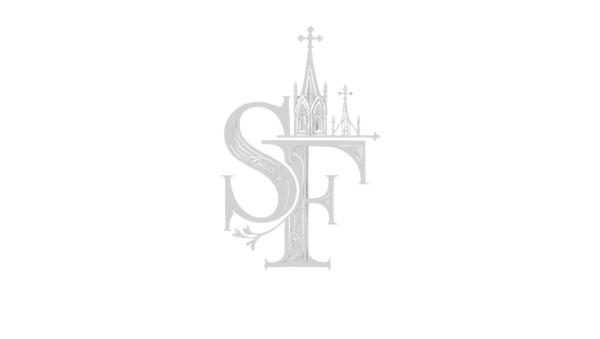
Soaring above medieval skylines, Gothic spires are more than just stone reaching toward heaven. They are symbols of faith, ambition, and human imagination etched into the sky.
Their silhouettes became the signatures of cathedrals, guiding pilgrims from miles away and declaring the strength of both cities and the church. Yet, these iconic towers were not born in their most elaborate form. Like the cathedrals themselves, Gothic spires evolved, from the sturdy simplicity of the early days to the breathtaking intricacy of the Late Gothic era.
Let’s journey through time and watch these spires rise.
Early Gothic: Foundations of Faith (12th–13th century)
The story begins in 12th century France, where a new architectural language was emerging. At places such as the Basilica of Saint Denis, Chartres Cathedral, and Laon Cathedral, builders experimented with verticality, pointing ever higher toward heaven.
Early Gothic spires were relatively simple, often cone or pyramid shaped, rising steadily from square towers. They were not yet adorned with delicate ornament but carried a clear message: faith reaches upward. Chartres, for example, still stands as a striking lesson in Gothic evolution. Its two towers are capped with spires from different centuries, one modest and early, the other soaring and intricate.
These spires were less about decoration and more about symbolism. They were beacons, both spiritual and literal, marking the heart of a medieval city.
High Gothic: Ambition in Stone (13th–14th century)

As engineering advanced, so did ambition. This was the age of height and daring. Builders experimented with openwork spires, lighter, skeletal structures that seemed almost too delicate to be stone.
Cathedrals such as Cologne and Strasbourg became masterpieces of this High Gothic push for the heavens. At Strasbourg, the spire rises in intricate tracery, each cut of stone carefully designed to let air and light pass through, creating the illusion of lacework carved into the sky.
The development of flying buttresses gave builders the freedom to reach higher than ever before, supporting towers that might otherwise have been impossible. Spires became statements of a city’s prestige as much as a house of worship.
Late Gothic & Flamboyant: The Pinnacle of Ornament (14th–16th century)
By the Late Gothic period, sometimes called Flamboyant Gothic, spires had become works of astonishing artistry. No longer just simple markers of faith, they were celebrations of creativity itself.
Ulm Minster in Germany, with its record breaking spire (the tallest in the world at 161 metres), shows how far the Gothic imagination could climb. Vienna’s St Stephen’s Cathedral reveals the flamboyant spirit — elaborate, detailed, and impossible to ignore.
These spires were so finely worked they seemed less like stone and more like frozen fire. Every pinnacle, crocketed edge, and twisting finial was a testament to the mastery of medieval masons.
Legacy of the Gothic Spire
Not all spires survived.
Lincoln Cathedral in England once held the record for the tallest structure in the world thanks to its immense wooden spire, but it collapsed in the 16th century, leaving only its legend behind.
Centuries later, the Gothic Revival breathed new life into the spire. Structures such as the Houses of Parliament in London and St Patrick’s Cathedral in New York carried the silhouette into modern skylines.
Today, Gothic spires remain icons, reminders of a time when stone, faith, and imagination defied the limits of gravity.

The evolution of Gothic spires is more than an architectural story; it is a story of human ambition. Each generation built higher, carved finer, and left its mark in stone against the sky.
That same spirit inspires Spires and Facts. Just as medieval builders left us towers of wonder, we are here to share their stories, their artistry, and their legacy — transforming history into inspiration for today.
If you would like to keep exploring, stay tuned for more stories from the Gothic world, where fact, myth, and artistry intertwine!
Sources & Further Reading
Chartres Cathedral – Official website: Chartres Cathedral History
Strasbourg Cathedral – Official site: Cathédrale Notre-Dame de Strasbourg
Cologne Cathedral (Kölner Dom) – UNESCO World Heritage: Cologne Cathedral
Ulm Minster – Official website: Ulm Minster
St. Stephen’s Cathedral, Vienna – Official site: Stephansdom Wien
Lincoln Cathedral – Official site: Lincoln Cathedral
Bony, Jean. French Gothic Architecture of the 12th and 13th Centuries. University of California Press, 1983.
Coldstream, Nicola. Medieval Architecture. Oxford University Press, 2002.
Binding, Günther. High Gothic: The Age of the Great Cathedrals. Prestel, 2002.
Spires and Facts is an independent platform created for educational and informational purposes only. This article has been compiled from publicly available sources to share knowledge and inspire curiosity about Gothic architecture and history. We are not affiliated with, endorsed by, or sponsored by any of the organisations, websites, or individuals mentioned here. Any external links are provided for reference only and do not imply promotion or partnership. Readers are encouraged to use their own discretion when exploring further resources.
